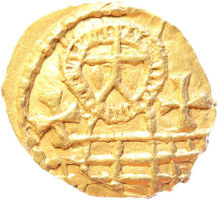Where There’s Muck, There’s Brass
Tony Abramson

- Tuesday 7 June 2016, 7.00PM to 7:50pm
- Free admission
Booking required - St Helen's Church, St Helen's Square (map)
- Wheelchair accessible
Event details
![]()
Archaeologist Tony Abramson explains how rather than a ‘Dark Age’, the early Anglo-Saxon period was economically vibrant with numerous English settlements engaged in both local and long-distance trade. This drew in all the territories surrounding the North Sea who shared a common currency - 1300 years before the Euro! Estimates of production show that more than a 100 million coins, ‘proto-pennies’, were produced between 685 and 750AD.
Tony’s illustrated talk focuses on the early Anglo-Saxon coinage of Northumbria produced in York in the 7th to 9th centuries. He introduces the elite gold coinage of the 7th century, the mercantile silver ‘sceat’ or early penny of the 8th century and the unique Northumbrian brass ‘styca’ or ‘widow’s mite’ of the 9th century.
About the speaker
Tony Abramson has studied early Anglo-Saxon coinage since the early 1990s. He has written a number of books on the topic, the most recent of which reclassified the silver proto-pennies or ‘sceats’ issued from the 670s to the 750s south of the Humber and well into the 9th century in the Kingdom of Northumbria. There are more than 640 varieties of these tiny coins, rich in the iconography of the Conversion Period. Tony initiated the biennial Symposia in Early Medieval Coinage and is Editor of the resultant publications.
Tony qualified as a Chartered Accountant after graduating in Economics from the University of Lancaster in 1970. He spent the last 25 years of his career launching technology start-up companies but has recently retired to take a PhD in Numismatics with the University of York’s Department of Archaeology.
Tickets
You may also like...
This event is part of the Eoforwic: Anglian-era York festival theme. Also in this theme:

